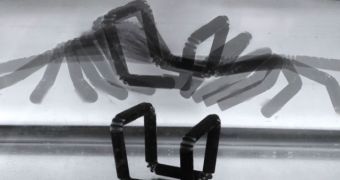We live in a three-dimensional world, so one might wonder what on earth brainiacs could possibly mean by a fourth dimension. As it happens, there is one, and they're about to make use of it.
In the realm of machines subject to computer numerical control (CNC Milling/Machining), the fourth dimension, or fourth axis, is the rotation of either the tool or the part around the other.
Normally, it's not all that important from what angle the material is deposited during 3D printing or other manufacturing techniques.
In the end, the fourth dimension is a degree of freedom to move in space, not a new way to do it linearly.
In layman terms, that means that, in certain situations, materials can gain the ability to change shape or other physical characteristics.
So the United States Army Research Office has begun to look into ways of harnessing the fourth dimension, starting off with an investment of $855,000 / €632,000.
Three scientists have been chosen, from Harvard, the University of Pittsburgh, and The University of Illinois.
Their task? Invent 4D printing, where the finished products have the ability to change in order to adapt to the environment or user requirements.
Obviously, since this is a military project, the ultimate goal is to design shapeshifting or at least adaptive armors and clothing, preferably with built-in technological means of communication or survival.
The ability to alter permeability, color and hardness would mean that there would be no need to change outfits when shifting focus from cooling to structural protection or camouflage.
This will be done by embedding smart materials that can respond to charge, light, temperature, etc. The base matrix holding everything together would be a hydrogel, also of smart material. The change is intended to be automatic, instead of having it listen to commands, but it might take a while to achieve that much.
It will take ages, actually, to go even from nanoscopic to microscopic proof-of-concept.
The other ideas for what 4D printing should be are along the lines of printing parts that then move within themselves (like a developing embryo) or move like a robot. Chances are that microdroplet printing will be used to combine the benefits of all these techniques.

 14 DAY TRIAL //
14 DAY TRIAL // 